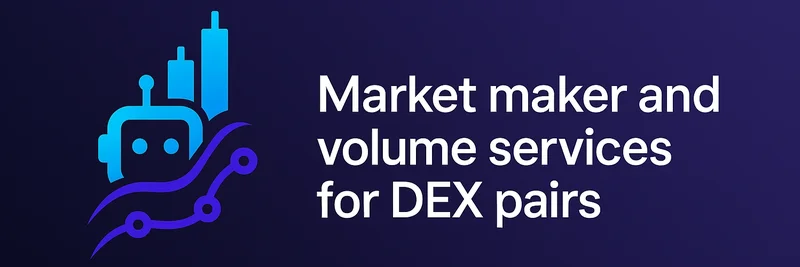If you’ve recently come across the CMA token (contract address: 0x086be9ffc95aa08469349b0ea5749051992f2bc3) on the BNB Chain, you’re not alone. CMA is a common ticker in the blockchain world, and multiple unrelated projects have used it. This article clears up what we know about the particular CMA token on BNB Chain, examines available data, and highlights the risks associated with such projects.
Token Basics
- Symbol: CMA
- Network: BNB Chain (Binance Smart Chain)
- Token Standard: BEP-20
- Contract Address: 0x086be9ffc95aa08469349b0ea5749051992f2bc3
- Primary Exchange: PancakeSwap V3
Project Background & Ticker Confusion
The contract address above has been variously labeled as “chainmaker.app” and “Crypto Max (CMA)” on tracking platforms like BscScan. However, it's crucial to note that many tokens have used the “CMA” acronym, including Crypto Market Ads, CoinMarketAlert, and CosmosAI, each with different purposes and chains. This often leads to investor confusion, so always verify the contract address before proceeding.
Utility & Use Case: Still Unclear
Despite being listed and available for trade, there’s currently no official website, whitepaper, or social media presence for this CMA token. Its utility—what the token is supposed to do within an application or ecosystem—is unknown as of early July 2025. Past projects with the CMA ticker have used it for advertising marketplaces, portfolio alerts, or AI/blockchain integrations, but these shouldn’t be confused with the token at this specific address.
Market Data Snapshot
As of early July 2025, here’s what’s publicly available:
- Price: Ranges from $0.00 (per BscScan) to about $1.01 on select trackers—suggesting negligible or highly volatile trading.
- 24-hour Trading Volume: Between $645 and $4,600 (when present).
- Market Cap: Approximately $1.02 million, but this can fluctuate or be misleading due to the extremely low number of holders.
- Liquidity: Widely varies; some sources report as low as ~$1,000 in the main pool.
- Holders: Between 4 and 9—this is extremely low, meaning most of the supply is held by very few wallets.
- Token Supply: BscScan lists a total supply of 1,000,000,000 CMA.
- Pair Age: Some trackers noted pair age as just minutes—another signal of recency and risk.
You can verify these numbers directly on BscScan.
Contract Security & Audit Findings
An ApeSpace audit of the contract suggests:
- Honeypot: Low risk (not trapping buyers)
- Ownership: Likely renounced (no central owner)
- Buy/Sell Tax: 0%
- Modifiable Features: None detected (i.e., no mint, airdrop, blacklist, sell limits, anti-whale mechanisms, or self-destruction function)
- Contract Verification: Yes
However, audits often come with strong disclaimers for newly created tokens, since code can be obfuscated or have unknown vulnerabilities. Always treat a “low risk” label for new contracts as a starting point for your own due diligence.
Ecosystem Context: The BNB Chain
The BNB Chain (formerly Binance Smart Chain) is a popular blockchain for deploying meme tokens and speculative assets. It’s low-cost and fast, especially following recent network upgrades (Maxwell, Lorentz, Pascal hard forks) that brought block times to under one second. This makes launching—and potentially abandoning—tokens quick and inexpensive. While this is great for innovation, it also attracts scams, “rug pulls,” and projects with little long-term value.
Key Risks and Considerations
- Early-Stage Volatility: Tiny holder counts and shallow liquidity can cause wild price swings.
- High-Risk New Project: New tokens may vanish or lose value rapidly. The lack of public documentation, social channels, or clear leadership increases this risk.
- No Stated Utility: Without a clear use case, the token’s value relies almost entirely on speculation.
- Ticker Confusion: Multiple unrelated tokens share “CMA.” Double-check addresses to avoid buying the wrong one.
- Rug Pull/Abandonment Potential: Even with ownership renounced, early-stage projects without oversight or reputation are at higher risk.
- No Community Presence: A healthy community often signals staying power. Here, the almost total absence is a warning sign.
How To Research and Protect Yourself
- Always verify the exact contract address on reputable explorers like BscScan.
- Check for project documentation—look for a website, social profiles, or a whitepaper.
- Use community resources and search discussions on forums or platforms like Reddit and X (Twitter) for warning signs.
- Review trading and liquidity data—tokens with almost no trading or liquidity are highly risky.
- Stay up to date by checking tools and trackers. If you want to see live stats and explore deeper analytics, Meme Insider compiles research and guides for meme token investors.
Final Thoughts
CMA on BNB Chain (0x086be9ffc95aa08469349b0ea5749051992f2bc3) is emblematic of new, high-risk meme tokens—limited market activity, scarce information, and unclear purpose. If you’re tempted to invest or trade, extreme caution is advised. Do your own research, avoid putting in money you can’t afford to lose, and remember: many newly-launched meme tokens disappear as quickly as they arrive.
For a deeper dive into meme tokens and how to avoid common pitfalls, check out our guides and tools at Meme Insider.



